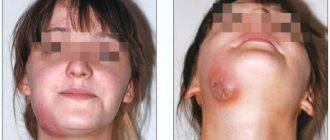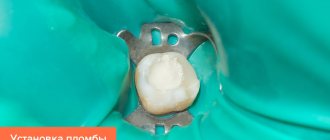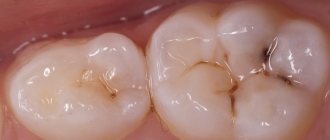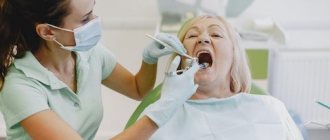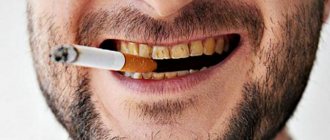When communicating with some people, it is impossible not to pay attention to the strange, unnatural and sometimes even frightening color of teeth. Sometimes a yellowish or grayish tint appears on them. It happens that brown spots appear directly on the teeth. All this, as a rule, indicates so-called pigmentation. How does it manifest itself, where does it come from and how to deal with it? These are, perhaps, the main questions that concern people who have encountered similar phenomena. In order to understand how to deal with such a problem, we must penetrate into its essence, find out for ourselves what are the known causes of tooth pigmentation.
External pigmentation on teeth
Among dentists, causes are usually divided into external and internal. Let's start, perhaps, with external factors. These usually include those substances that we use in everyday life, which externally stain the tooth, penetrating into the pores of its enamel.
The most dangerous factor can be called smoking, because the nicotine resins contained in tobacco give the enamel an unpleasant yellowish-brown tint. A similar substance in its effects is coffee. It is also impossible not to mention strong black tea and red wine. They also play an important role in destroying tooth enamel and giving it an unaesthetic appearance.
We must not forget about the huge number of food dyes, in which the coloring pigments cause damage. And, of course, one cannot fail to mention the stones and plaque that arise due to violation of oral hygiene rules, lack of minerals in the body and a minimal amount of solid food or even its absence in the diet. External manifestations of pigmentation on teeth are not difficult to eliminate. All you need is advice from a dentist. You will also need to use the right toothpaste.
Prevention
Simple measures will help you avoid or at least delay the appearance of yellow spots on your teeth:
- Choosing the right brush A brush that is too soft does not remove plaque, and a brush that is too hard can damage the enamel.
- Remember about dental floss Where there are bacteria, there is plaque. And bacteria love spaces where the brush cannot reach. Floss will remove food debris, decay products, and reduce the possibility of bacterial flora reproducing.
- We buy paste according to the task. Whitening, therapeutic, preventive - you should not be thoughtless when choosing toothpastes. In cases of medicated paste, it is better to consult a doctor before making a purchase.
- We drink and clean, we clean and drink. Is it not easy to give up a cup of coffee in the morning and fruit drink on a hot day? Just make it a habit to brush your teeth every time after eating pigmented foods.
- Difficult, but necessary Quitting smoking is the only way to avoid being a smoker.
Internal pigmentation
The situation is much more complicated with internal pigmentation, because then the internal hard tissue of the tooth is already stained. There can be a huge number of reasons for such changes in the oral cavity. One of the most common is a change in the balance of fluoride in the body. Why? Fluoride has a destructive effect on teeth, since the tissue changes its color depending on its lack or excess.
Stories are replete with cases where all the villagers had the same stains on their teeth because all the villagers drank water from the same underground springs. In some cases, staining of tooth enamel occurs due to the use of tetracycline antibiotics. It also happens that the cause of such a problem can be a filling placed as a result of dental surgery, provided that the material was made of copper amalgam.
For some, pigmentation comes with age. Hereditary factors also play a role. In children, pigmentation on the teeth can also be due to an improper diet and a sharp change in temperature in the oral cavity, for example, when consuming cold food immediately after hot food.
Pathogenesis of discoloration and its complications
In order to understand how this pathological condition develops, you need to consider the anatomical structure of the tooth. Its hard main part consists of dentin, which forms its crown and root: the first is covered with white enamel, the second is separated by cement. Being the hardest and most durable layer, enamel provides protection to the entire tooth. Inside it there is connective tissue that contains nerve endings and blood vessels. It is called pulp.
The natural color of teeth is determined by the thickness and transparency of tooth enamel, dentin and pulp. Due to their unequal location in the height of the crown, it varies from the edge to the cervical region. The basis of enamel and dentin are crystals of the mineral hydroxylapatite. When certain disorders occur in the tooth or the body as a whole, they are prone to deformation and staining. For this reason, the color acquired under their influence will depend on the initiating factor.
It is worth noting that discoloration is not just an aesthetic defect, but a sign that pathological processes are occurring in the body. In itself, it does not pose a threat to health, but it should not be ignored, since in a neglected state it will lead to:
- thinning of tooth enamel and deterioration of its protective characteristics;
- the appearance of psychological discomfort, difficulties in communication.
Thin tooth enamel will allow infectious agents to pass through and will also contribute to the development of caries. This problem is especially relevant in childhood, because it does not disappear with the loss of milk units. Because affected teeth fall out earlier, severe malocclusions may develop that will require treatment.
Diagnostics: what methods are used in dentistry?
Science, unfortunately, has not yet made big strides in diagnosing dental pigmentation. Limitations in laboratory and clinical research, the lack of availability of high-quality and modern equipment affect the efficiency of dentists.
But, despite all the obstacles, in our country there are a huge number of specialists endowed with intelligence and experience who, after conducting only a visual examination of the patient, will be able to accurately diagnose pigmentation on the teeth. Although there are often cases when in diagnosis it is necessary to resort to modern technologies, such as radiography or orthopantomography, with the help of which the dentist studies the internal problems of damaged teeth.
Doctors have a large number of other devices and methods in their arsenal that are used in particularly difficult situations. These include, for example, microscopy or rheodentography. They allow the specialist to examine the problem in more detail. And in the study of tissues such as gums or blood vessels, a device called a reparodontograph is often used.
Diagnostic methods
The most important method for diagnosing discoloration is visual examination and collection of information about the condition of the body as a whole. To assess the internal condition of the teeth, radiography . To obtain more accurate information about structural changes in tissues, digital technologies are used. An orthopantomograph is a device that helps to view the dentition on a computer screen with high resolution from different angles. The role of this study is especially important during therapy, to monitor the correctness of the chosen course. Another highly informative method for diagnosing pigmentation is microscopy . It allows you to enlarge the object under study tens of times and examine the area of pathology extremely closely.
Is it necessary to treat such an illness?
How many people plan to treat tooth pigmentation? Most people consider the problem to be purely cosmetic. There are many reasons for such negligence on the part of patients. This includes illiteracy, arrogance, carelessness, and often, of course, fear. It always seems to the average person that now he will introduce more vegetables and dairy products into his diet, start using more expensive toothpaste, and the problem will be eliminated. But it won't work that way.
The color of the teeth will not acquire the desired snow-white shade. If such a problem arises, you should immediately contact a specialist, and the sooner you do this, the better for you. Moreover, both from the aesthetic and material side. Using special equipment, a dentist can easily rid you of external plaque on tooth enamel, identify the internal cause of pigmentation and, accordingly, prescribe a specific course of treatment in order to eliminate not only the symptoms of the disease, but also the disease itself.
Online consultation with a doctor if you are concerned about symptoms
Alternative Methods
Sometimes the use of whitening procedures is contraindicated or the patient simply does not want to do it on a regular basis. In such cases, overlays are used.
- Veneers
Special veneers are made from ceramic or composite materials. They are selected to match the size of the teeth and then glued to the outer surface. Veneers are made in small rows of 5-7 pieces. Teeth under veneers, unlike crowns, remain alive. And they can be changed every 10-15 years.
- Lumineers
These linings are made from special porcelain, reinforced with nickel for strength. They are thinner than veneers, and teeth do not have to be specially prepared for them.
Dental veneers don't just change color, they rejuvenate your smile and strengthen your teeth.
Colgate Simply White Night Gel
The list of common treatments is relatively small and is available to everyone. Most drugs are undesirable to use without the advice of a specialist. However, what to do when there is not always enough free time to visit the dentist, and the problem requires an immediate solution due to certain life circumstances? In such cases, you can rely on some cosmetic products, such as some toothpastes or gels.
There are an endless number of different options, but the most popular among ordinary consumers is Colgate Simply White Night gel. A group of scientists was given a task: how to whiten teeth without harming the enamel, and to do it in such a way that everyone could do it at home.
The method of application is extremely simple, as it was created from the point of view of maximum comfort.
How to use the gel?
To begin, you simply need to clean your tooth enamel using standard methods, such as a toothbrush and toothpaste. This is necessary so that there are no excess bacteria in the oral cavity and the space is ready for treatment. Then you should dry each tooth with a special swab and apply the gel to them.
It is recommended not to eat anything for 15-20 minutes. And thus, within a few days you will notice the result, and after a longer time, your smile will finally acquire that desired shine. The effect of such whitening can be observed for about one year. Then the course must be repeated.
Treatment of dental discoloration
Before starting treatment, our specialists carry out sanitation of the oral cavity, if dental diseases have been identified, and professional hygienic teeth cleaning. In this way, they eliminate the risk of developing infectious diseases and achieve the best results. The main methods used for treatment are presented in our table:
| Treatment method | Her description |
| Whitening | CELT uses in-office whitening, or more precisely, the latest version of the popular “Zoom 4” system from Philips. During the procedure, the doctor applies a gel containing hydrogen peroxide and potassium phosphate to the tooth surface. The gel itself begins to act under the influence of UV rays: oxygen molecules are released and penetrate into the dental tissues, destroying coloring pigments, which provides the desired whitening effect. |
| Installation of veneers | They are special onlays made of composite or ceramic that are fixed on the outer surface of the teeth. Thus, they are able to disguise the dark color of teeth even if it cannot be removed by whitening. A veneer can be installed on one darkened tooth, or on all units of the frontal group to restore their whiteness. |
| In-canal whitening | The procedure is indicated for deep pigmentation at the root canal level. Hydrogen peroxide is used in the process. Just like in the case of “Zoom4”, under the influence of UV rays, oxygen molecules are released and penetrate into tissues, destroying coloring pigments. In this case, several visits to the dentist will be required to achieve the desired result. |
The drug "Gluflutored"
However, not all products are as simple, effective and easy to use as the gel described above. Most drugs can be harmful if used without proper prescription from a doctor, who will instruct in detail and warn against potential risks.
The specialist will tell you how to get rid of external and internal manifestations of pigmentation, how to strengthen tooth enamel and prevent diseases. An effective way to get rid of the problem is to change the chemical composition of saliva by influencing the thyroid gland with a certain set of minerals, vitamins and fluoride for teeth. One of the most common substances used for treatment in clinical settings is Glufluored.
"Glufluored": how is it used?
It is applied quite simply. The tooth is washed with water and dried. The substance is applied to the enamel surface and disinfected after a minute. The procedure is usually repeated about twice a year. And although glufluored is inherently harmless, it still cannot be used without careful medical supervision. Because the drug requires an extremely precise order of use, as well as applying a precisely measured amount of the composition. After this procedure, the dentist usually applies bonding to the surface of the teeth.
This drug has an official name, which sounds like Monobond Plus. It helps in restoring and strengthening the connections between the surface of the tooth and the substance applied to it. This remedy is, in principle, harmless for most people. The only exceptions may be individual allergic reactions to certain substances contained in boding. But such incidents are rare.
The drug "Remodent"
A wonderful drug with which you can both strengthen your teeth enamel and preserve it for many years is Remodent. 70% of dentists prescribe it for preventive and therapeutic purposes. It has no side effects, with the possible exception of individual allergic reactions. It is effective and easy to use.
You will need 3 g of powder per 100 ml of boiled water at room temperature. You need to rinse your mouth after eating every few days for 10 months.
Folk remedies: what methods used by our grandmothers are effective?
It would be blasphemous not to remember folk remedies, proven by the experience of many generations. However, they should also be used in moderation, because they are extremely effective and can not only remove excess plaque, but also erase the enamel. For example, many people sometimes brush their teeth by dipping a brush in baking soda. Rubbing your teeth with hydrogen peroxide is also an equally effective remedy.
We will not deviate from ordinary products, the benefits of which were known long before us. For example, rubbing strawberries on your teeth and gums. Or you can brush your teeth with charcoal from a burnt eggplant.

